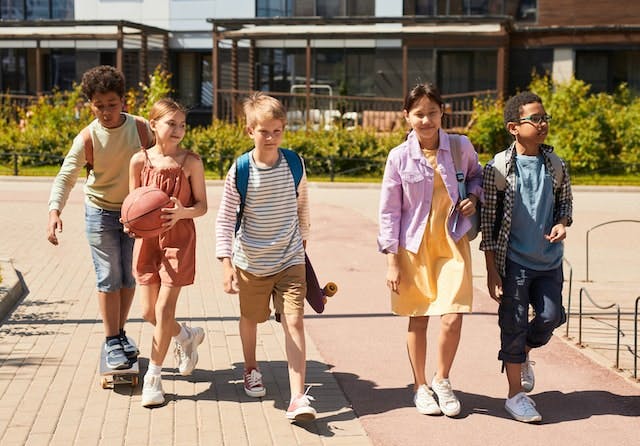Fearmongering for Fun and Profit
An advocacy group seems geared less toward making children safe and more toward making parents terrified to ever let their tots leave the house without a Sherman tank.

The National Center for Missing and Exploited Children gets about $40 million a year in federal funding. It spends at least a few of those bucks crafting “helpful” emails like the one I got a few weeks back with the subject line: “Are your kids safely back-to-schooling?”
Not only is “back-to-schooling” not a verb, but the question also seems geared less toward making children safe and more toward making parents terrified to ever let their tots leave the house without a Sherman tank.
“Dear Lenore,” the letter begins:
“Routine bus stops, children biking or walking to school, and after-school pick-ups by parents are back all over America as we embark on another year of learning.
“While we are all excited for the year ahead, it is important to keep in mind one of the most important statistics we at the National Center for Missing and Exploited Children know all too well that attempted abductions occur more often when a child is going to or from school or school-related activities.”
Wait a second — why are we talking attempted abductions at all? I get that kidnapping is the center’s calling card, but if we’re really concerned about keeping children safe on the way to school, why focus on the least likely of all dangers? Why not talk about pedestrian safety? Or the danger of driving the children to school? After all, about 1,000 children under age 14 die as car passengers each year.
Meantime, according to Department of Justice statistics for 2019, the most recent I’ve been able to find, somewhere between 52 and 306 children were abducted by strangers in a “stereotypical” — “Law & Order”-type — kidnapping, and 8 percent (5 to 24) were killed.
Those cases are horrible. Heartbreaking. They are also, thank God, extremely rare. In a country of 73,000,000 minors, we’re talking about 1 in 2.5 million. By way of (albeit strange) contrast: Your odds of having conjoined twins are about 1 in 200,000.
Nonetheless, the email goes on to say — in bold:
“School-age children are at greatest risk on school days before and after school (7-9 a.m. and 3-4 p.m.) and after dinner time (6-7 p.m.).”
That makes it sound as if all children are at risk — great risk — of being kidnapped anytime they are NOT sitting at home on the couch.
These children-are-in-danger-anytime-they’re-outside warnings come at a huge social cost. Amped-up fears of stranger danger are at least part of the reason children play outside on their own only an average of 4-7 minutes a day, and only 11 percent still walk to school. They’re part of the reason parents sometimes get arrested or investigated for trusting their children to walk the dog, play in front of the house or wait in the car while mom dashes into Starbucks.
The authorities act as if those parents put their children in serious danger. And yet we don’t arrest parents for feeding their children solid food, even though 140 children choke to death each year. We don’t arrest parents who live in two-story homes, even though, tragically, every year about 100 children die from falls. The authorities understand that, yes, rare accidents happen, but we can’t start criminalizing everyday life.
Except when it comes to giving children some independence.
Magnifying the possibility of child abduction is “irresistible to those with a stake in furthering parental anxieties by keeping the issue before the public,” says a University of California, Berkeley historian, Paula S. Fass, author of “Kidnapped: Child Abduction in America.”
That’s fearmongering. And you can’t fearmonger any better than telling parents that basically any time their children are not in the car, classroom or kitchen, they are in danger of being kidnapped.
Creators.com

